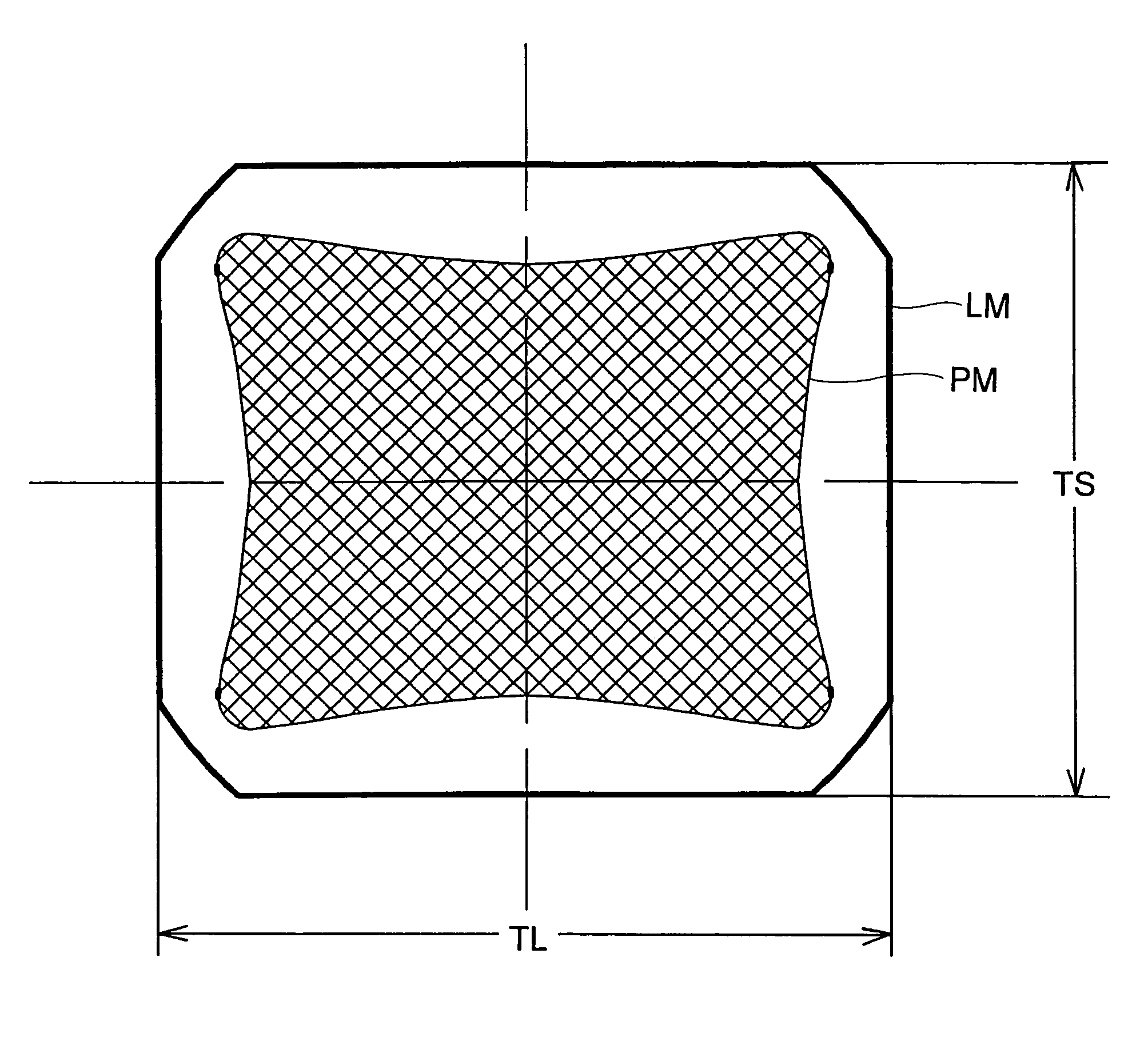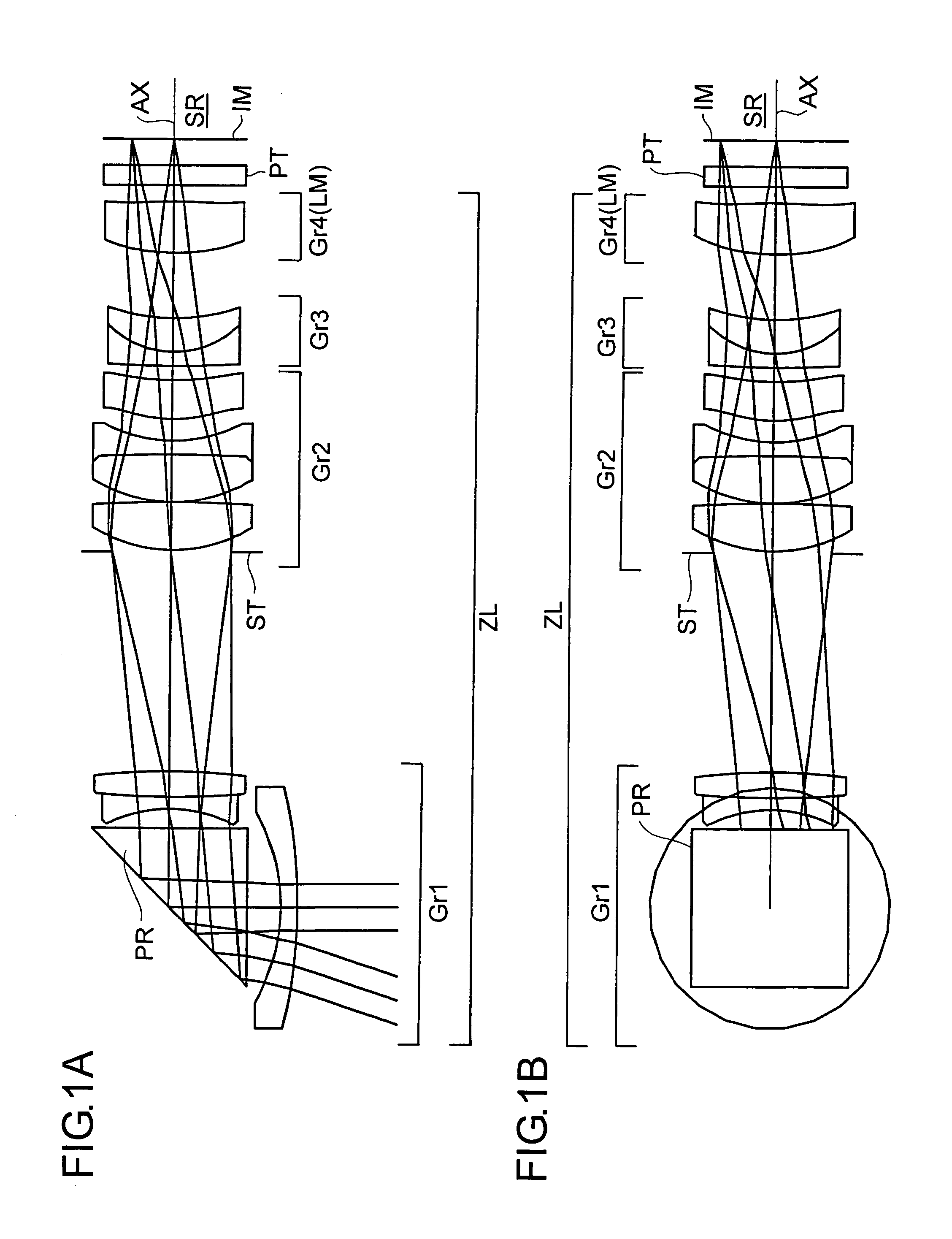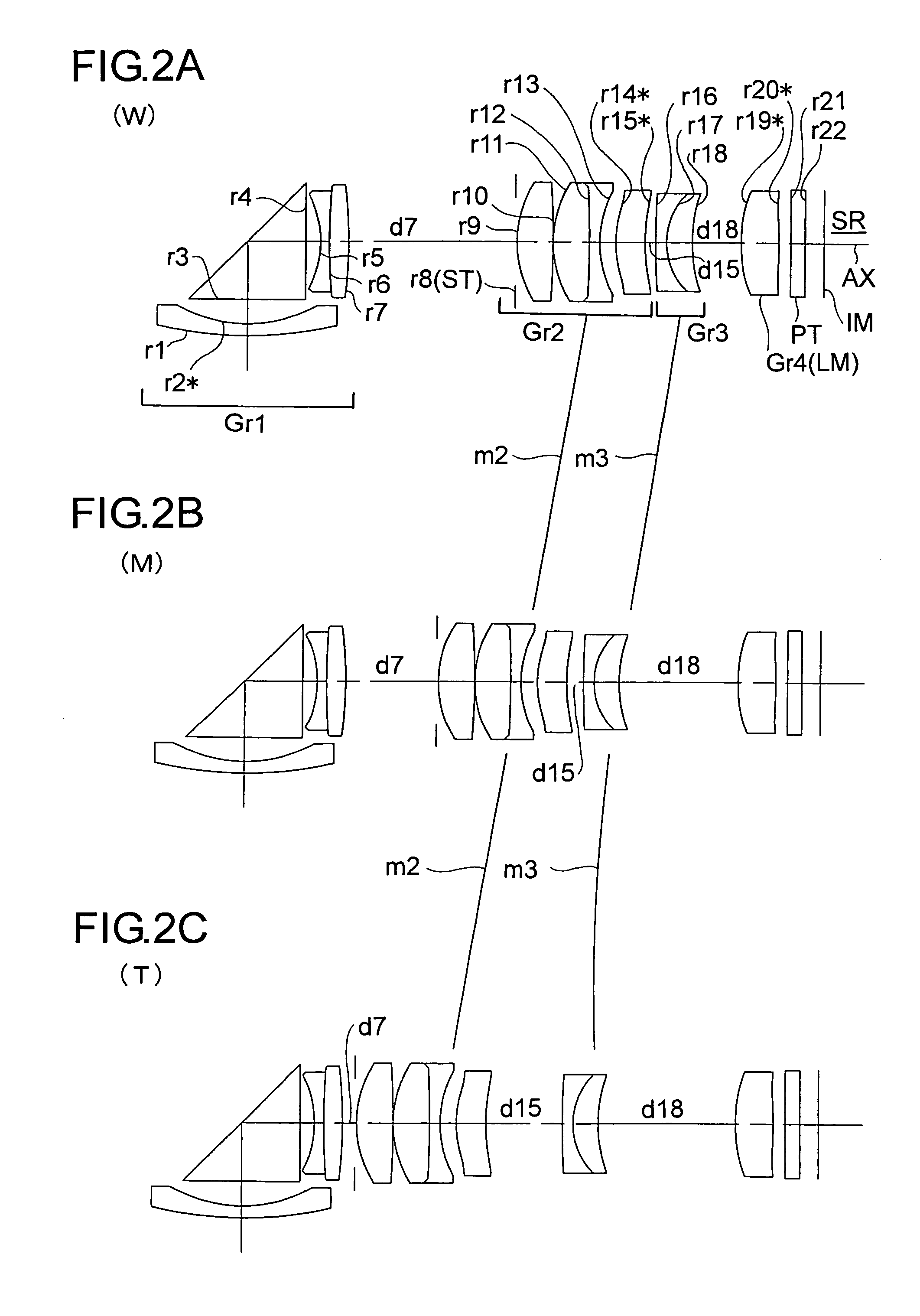Image-taking lens unit
a technology of image-taking lens and lens element, which is applied in the field of image-taking lens element, can solve the problems of difficult molding of lens element in a non-circular shape with optical glass, large astigmatism, and differences in curvatur
- Summary
- Abstract
- Description
- Claims
- Application Information
AI Technical Summary
Benefits of technology
Problems solved by technology
Method used
Image
Examples
examples
[0067]Hereinafter, practical examples of image-taking lens units embodying the present invention will be presented with reference to their construction data and other data. Examples 1 and 2 presented below are numerical examples corresponding respectively to the first and second embodiments, respectively, described above. Thus, the optical construction diagrams (FIGS. 1A, 1B, 2A, 2B, 2C, and 3; and FIGS. 4A, 4B, 5A, 5B, 5C, 6A, and 6B showing the first and second embodiments also show the lens constructions of Examples 1 and 2, respectively.
[0068]Tables 1 and 2 show the construction data of Example 1, and Tables 3 and 4 show the construction data of Example 2. In the basic optical construction shown in Tables 1and 3 (where i represents the surface number), ri (i=1, 2, 3, . . .) represents the radius of curvature (mm) of the i-th surface counted from the object side; di (i=1, 2, 3, . . .) represents the axial distance (mm) between the i-th and (i+1)th surfaces counted from the object...
PUM
 Login to View More
Login to View More Abstract
Description
Claims
Application Information
 Login to View More
Login to View More - R&D
- Intellectual Property
- Life Sciences
- Materials
- Tech Scout
- Unparalleled Data Quality
- Higher Quality Content
- 60% Fewer Hallucinations
Browse by: Latest US Patents, China's latest patents, Technical Efficacy Thesaurus, Application Domain, Technology Topic, Popular Technical Reports.
© 2025 PatSnap. All rights reserved.Legal|Privacy policy|Modern Slavery Act Transparency Statement|Sitemap|About US| Contact US: help@patsnap.com



